A numeral expander template to use when exploring five-digit numbers.
Use this numeral expander to explore the place value of numbers in the tens of thousands.
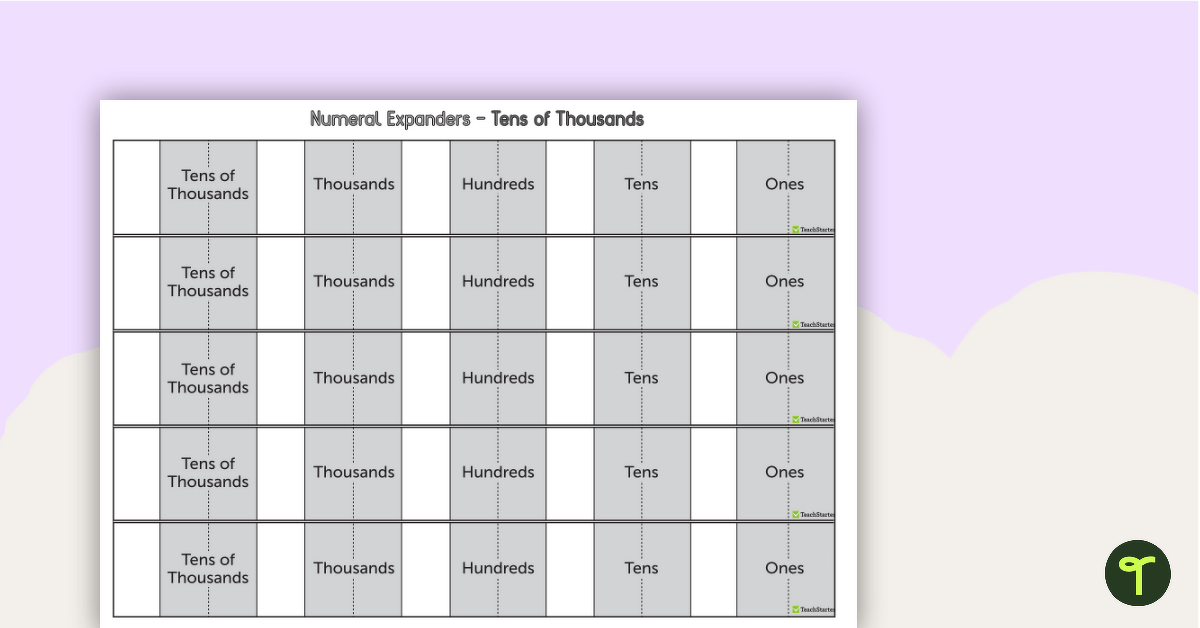
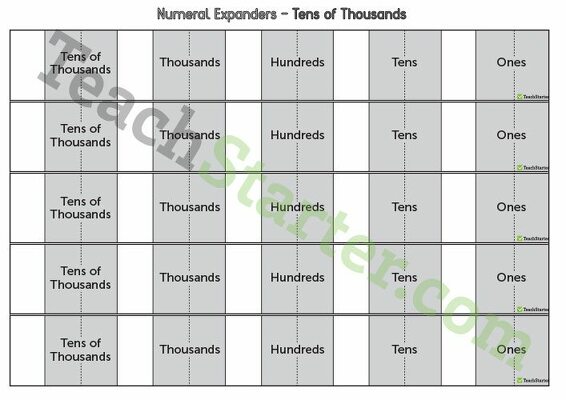
A numeral expander template to use when exploring five-digit numbers.
Use this numeral expander to explore the place value of numbers in the tens of thousands.

We create premium quality, downloadable teaching resources for primary/elementary school teachers that make classrooms buzz!
Write a review to help other teachers and parents like yourself. If you'd like to request a change to this resource, or report an error, select the corresponding tab above.
Would you like something changed or customised on this resource? While our team makes every effort to complete change suggestions, we can't guarantee that every change will be completed.
Did you spot an error on this resource? Please let us know and we will fix it shortly.
Are you having trouble downloading or viewing this resource? Please try the following steps:
If you are still having difficulty, please visit the Teach Starter Help Desk or contact us .
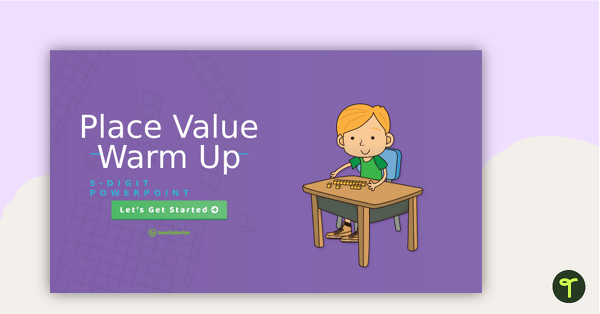
An engaging 44 slide interactive PowerPoint to use when learning about place value to 5-digits.
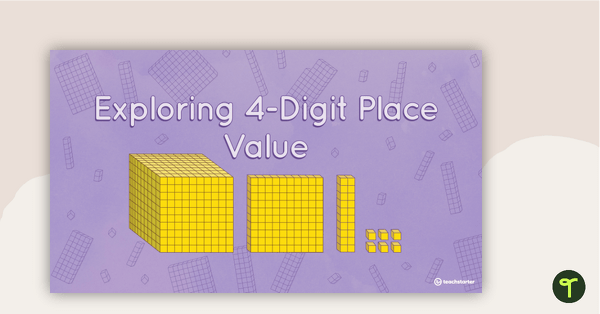
A 31 slide PowerPoint template to use when exploring place value to thousands.
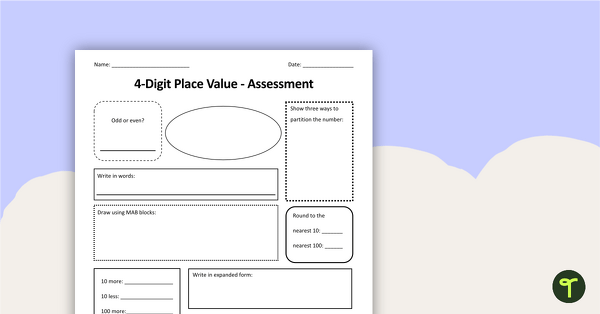
An open-ended worksheet to use when assessing your students' knowledge of place value to the thousands.
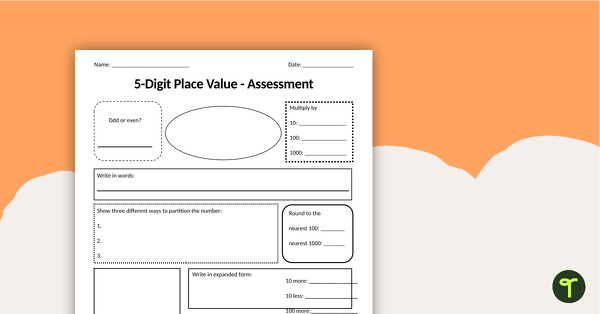
An open-ended worksheet to use when assessing your students' knowledge of place value to the tens of thousands.
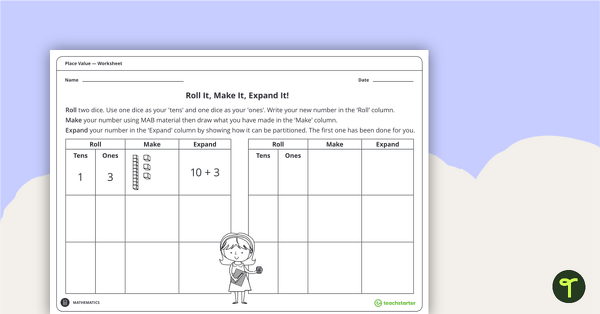
A worksheet for students to use when learning about the place value of two-digit numbers.
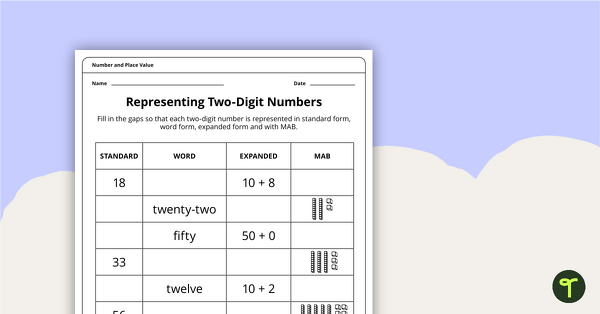
A set of worksheets for students to use when learning about place value and the different way two-digit numbers can be represented.
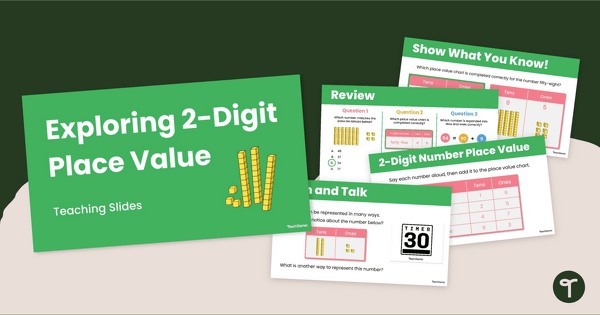
Explore 2-digit numbers using place value strategies with an interactive teaching presentation.
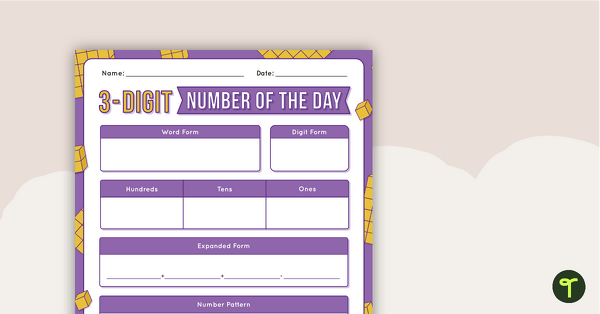
A 3-digit place value worksheet to represent the number of the day in different ways.
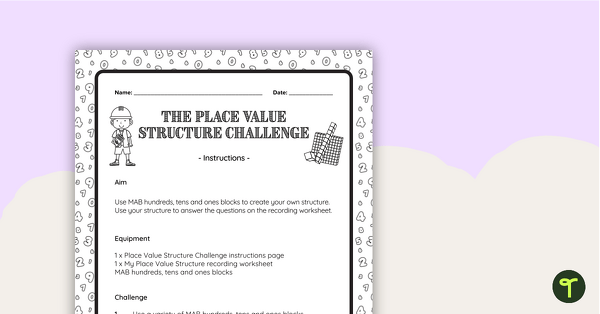
A hands-on activity to use in the classroom when assessing 3-digit place value.
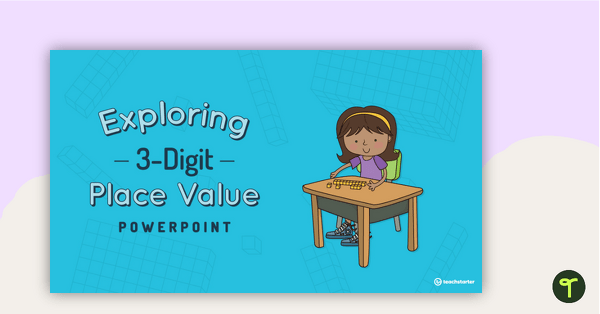
A 15 page editable PowerPoint to use in the classroom when introducing 3-digit place value.
Would love this to be also available in just tens and ones and hundreds, tens and ones for the junior years :)
Hi Kodey, Thanks for your suggestion. Please feel free to request a resource here: https://www.teachstarter.com/request-a-resource/ Requests are voted on by the Teach Starter community. We create the top request each week. Please let me know if you have any further questions, I'm more than happy to help.
this would be useful if it also looked at decimals. eg. including tenths, hundredths, etc.
Hi Anne-Maree, Thank you for your suggestion. If you would like us to create this resource for you, you can formally request this here: https://www.teachstarter.com/request-a-resource/ Kind regards, Steph